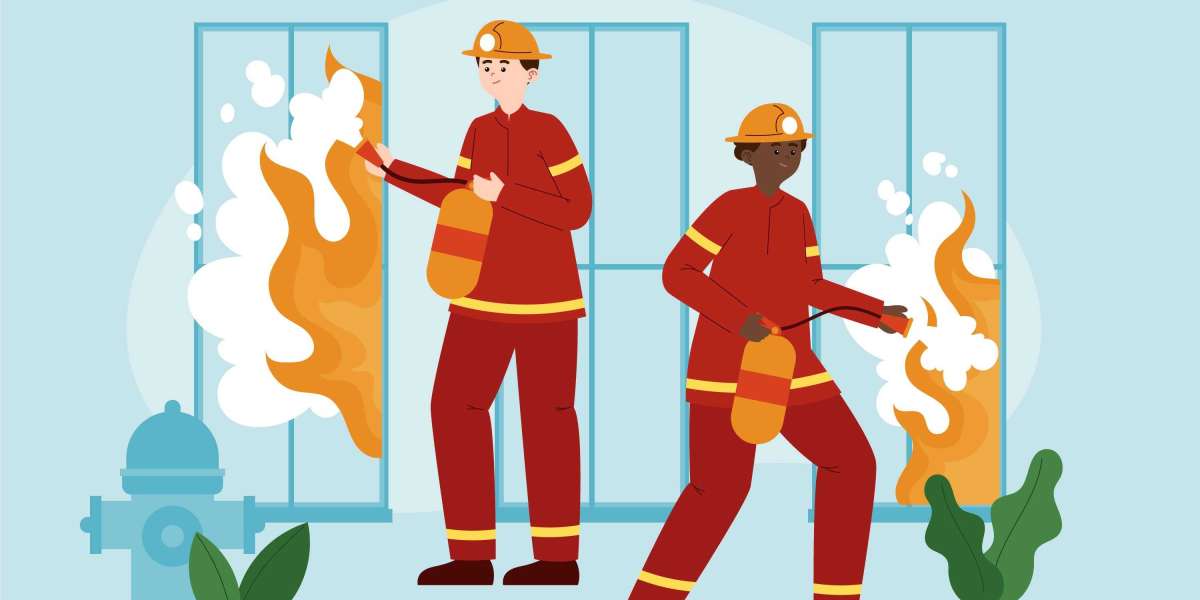A fire and safety risk assessment is a systematic process used to identify potential fire hazards and other safety risks within a property, evaluate their likelihood and potential impact, and implement measures to reduce or eliminate those risks. When it comes to commercial fire risk assessments, the process is tailored to the specific needs and challenges of commercial properties—such as offices, retail spaces, warehouses, and industrial units.
Below is an overview of what commercial fire risk assessments involve, why they are important, and how they are typically conducted.
1. Understanding Fire and Safety Risk Assessments
What Is a Fire and Safety Risk Assessment?
- Definition: A fire and safety risk assessment is a detailed evaluation of a premises to identify fire hazards and other safety risks, determine who might be harmed, and decide on the necessary precautions to mitigate those risks.
- Purpose: The goal is to protect lives, reduce property damage, and ensure compliance with legal requirements and safety standards.
Why It’s Important for Commercial Properties
- Legal Compliance: Many regions have specific legislation (such as the Regulatory Reform (Fire Safety) Order 2005 in the UK) that requires commercial property owners and managers to conduct regular fire risk assessments.
- Protection of Life and Property: Effective assessments help minimize the risk of fire incidents, protecting employees, customers, and assets.
- Insurance and Liability: Up-to-date risk assessments can affect insurance premiums and may be required by insurers. They also help demonstrate due diligence in case of an incident.
2. Key Steps in a Commercial Fire Risk Assessment
Step 1: Identify Fire Hazards
- Sources of Ignition: Identify potential sources such as faulty electrical equipment, hot surfaces, or improperly stored flammable materials.
- Fuel Sources: Recognize materials that could ignite or contribute to a fire, such as paper, chemicals, or furnishings.
- Oxygen Sources: Consider how air flow and ventilation could affect fire spread.
Step 2: Identify Who Might Be Harmed
- Employees and Visitors: Assess which groups, including staff, customers, or contractors, might be at risk.
- Vulnerable Persons: Identify individuals who may require additional assistance, such as those with disabilities or mobility issues.
Step 3: Evaluate the Risks and Decide on Precautions
- Risk Evaluation: Consider the likelihood of a fire occurring and the potential severity of its impact.
- Implement Precautions: Decide on measures to eliminate or reduce risks. This might include installing fire detection systems, ensuring clear evacuation routes, or implementing safe storage practices for hazardous materials.
Step 4: Record the Findings
- Documentation: Create a detailed record of identified risks, the steps taken to mitigate them, and any further actions required.
- Action Plan: Include timelines and responsibilities for implementing recommended improvements.
Step 5: Review and Revise
- Regular Reviews: Fire and safety risk assessments should be reviewed periodically or whenever there are significant changes to the building’s layout, occupancy, or use.
- Continuous Improvement: Update the assessment to reflect new hazards or changes in regulations and best practices.
3. Essential Components of a Commercial Fire Risk Assessment
Fire Prevention Measures
- Housekeeping: Ensure that areas are kept tidy and free from unnecessary combustible materials.
- Equipment Maintenance: Regularly inspect and maintain electrical systems, heating equipment, and any other potential ignition sources.
Fire Detection and Alarm Systems
- Detection Systems: Install smoke detectors, heat sensors, or other appropriate fire detection equipment.
- Alarm Systems: Ensure that fire alarms are clearly audible and that their signals are understood by everyone on the premises.
Emergency Exits and Evacuation Procedures
- Exit Routes: Plan and clearly mark emergency exits, ensuring they are unobstructed and easily accessible.
- Evacuation Plans: Develop and communicate clear evacuation procedures, including designated assembly points outside the building.
Staff Training and Drills
- Regular Training: Provide employees with training on fire safety, including how to use fire extinguishers and other emergency equipment.
- Drills: Conduct regular fire drills to ensure everyone is familiar with evacuation routes and procedures.
Maintenance of Fire Safety Equipment
- Equipment Checks: Regularly inspect and service fire extinguishers, sprinkler systems, and other safety equipment.
- Signage and Lighting: Ensure that emergency signage and exit lighting are maintained in good condition and comply with current standards.
4. Best Practices for Commercial Fire Risk Assessments
- Engage Professionals: While many businesses can conduct initial assessments internally, it is often beneficial to work with fire safety professionals who can provide expert guidance.
- Integrate with Overall Risk Management: Fire risk assessments should be part of a broader health and safety strategy to ensure all potential hazards are addressed.
- Keep Detailed Records: Documentation not only helps in maintaining safety standards but also serves as evidence of compliance in the event of an inspection or incident.
- Stay Updated: Fire safety regulations can change. Regularly review and update your risk assessment to remain compliant with the latest standards and best practices.
- Consult with Stakeholders: Involve employees, safety officers, and building occupants in the process to gather diverse insights into potential hazards and effective solutions.
5. Conclusion
A commercial fire risk assessment is a vital process that helps identify, evaluate, and mitigate risks associated with fires and other safety hazards. By following a systematic approach—identifying hazards, assessing risks, implementing preventive measures, and regularly reviewing procedures—businesses can protect lives, safeguard property, and comply with legal requirements. Investing time and resources into a thorough fire and safety risk assessment is essential for ensuring a safe environment for everyone who uses the premises.
By adhering to these guidelines and best practices, commercial property owners and managers can create safer workplaces and be better prepared in the event of an emergency.



